Vietnamese tea culture has been a very special thing of my country for three thousand years, without the complex rituals found in other countries. At family gatherings, meetings and celebrations, tea and the rituals associated with it are intrinsically linked to Vietnamese concepts of hospitality, respect for elders and peaceful communion with nature.
For the Vietnamese, tea is a natural and refreshing necessity. It’s a way of life, not just energy to get you through the day. If you’d like to find out more about tea culture in Vietnam, read on…
I. Tea culture in Vietnam
According to historical documents, tea, associated with Buddhism, was and was born in pagodas and temples. It was called ‘Tea Meditation’. This form of tea quickly became popular at the Vietnamese royal court. In the past, this sophisticated tea was enjoyed by the king, the mandarin, the aristocracy and the noble lineage.
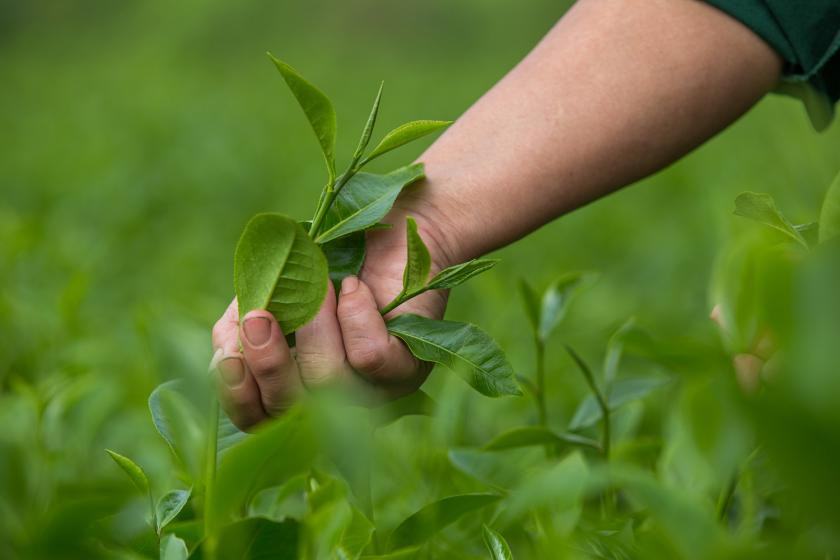
Ordinary people, on the other hand, simply plucked the green leaves from the tea bushes, washed them, gently crumpled them, boiled them and enjoyed them. Through contact with the Chinese and European industrial approach over many years, the Vietnamese also learned, practised and created the preconditions for the development of Vietnam’s own tea industry.
Traditionally, Vietnamese tea drinking is considered a daily habit of the elderly in the home and in society in general. In the morning, people start a new day with a few cups of tea to wake up their energy.
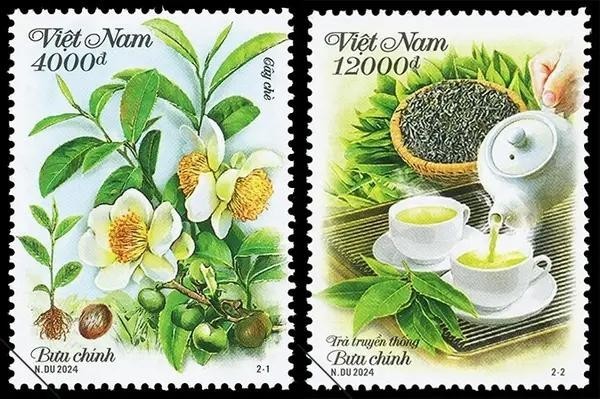
The patio or garden in the backyard is one of the most popular places for tea because of its proximity to nature, as a little fresh air can give the tea an extra flavour. Drinking tea after meals, especially dinner, is also a habit enjoyed by many people, when all the family members can get together and talk about what they’ve been up to during the day.
Tradition is out and modernity is in, but generation after generation, tea is not only part of everyday Vietnamese life, it is also an essential part of the country’s history and economy. Tea growing cannot just be expensive and rare.
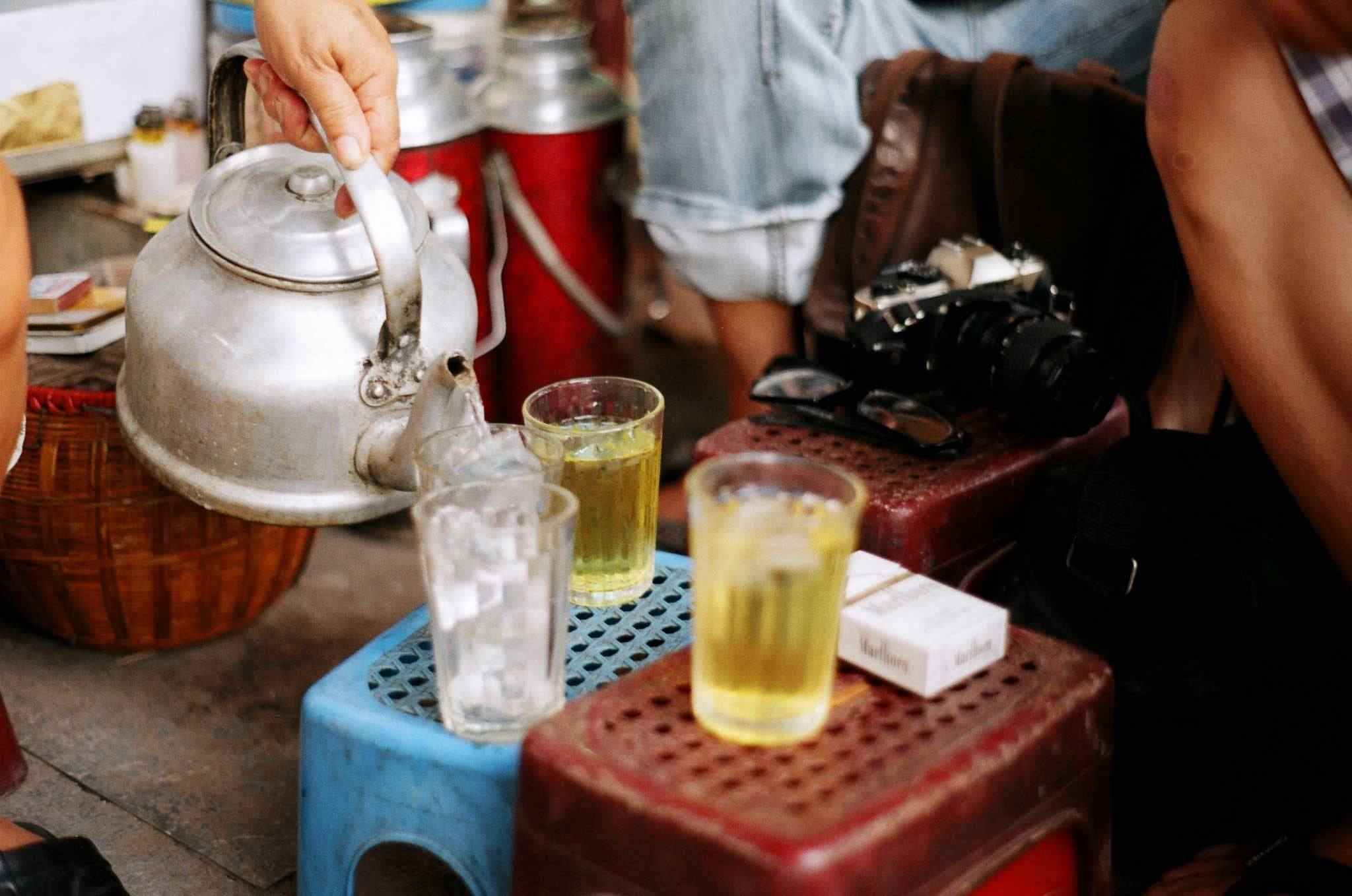
The basis of tea culture is its mass appeal, its accessibility and its integration into people’s daily and festive lives. Tea is often served at the start of business meetings, at weddings, after meals or as part of a chat with friends. Of course, people drink tea at home, at any time of day and for no particular reason. Drinking tea is a beautiful custom in Vietnamese culture.
II. Most popular types of Vietnamese tea
Over thousands of years of growing and drinking tea, the Vietnamese have built up a tea culture that is both diverse and unique. Tea drinking has become an essential part of daily life.
Tea trees have been grown from the countryside to the high mountains, from the northern highlands to the central highlands of Vietnam. The Vietnamese have created many different types of tea. In each region, you can find many unique types of tea that are representative of the region. So you can experience many different and interesting tastes and names.
Here are the 9 most famous and popular types of Vietnamese tea, along with their names in Vietnamese, that tea lovers must try at least once.
1. Green tea (Trà xanh)
Vietnamese green tea is mainly made using the pan-frying technique. As a result, green tea has a characteristic strong flavour, with a slightly bitter but sweet taste on the tip of the tongue after a sip of tea.
It differs from Japanese green tea, which is made using the steaming technique, or Taiwanese green tea, which is processed as a semi-fermented oolong tea.
Fans of Vietnamese green tea will recognise the rich, unique flavour and fresh aroma of this refreshing batch.
Not grassy in colour like Japanese green tea or pale yellow like Chinese tea, traditional Vietnamese green tea is golden like honey, especially Tan Cuong tea from the Thai Nguyen region.
Green tea grown in high mountain areas such as the provinces of Ha Giang, Tuyen Quang, Yen Bai or Lam Dong has the lighter, purer taste of tea grown at higher altitudes, and the colour of the water tends to be lighter. Sometimes, drinkers will smell cooking in a sip of Vietnamese tea because of the typical drying technique.
2. Black tea (Trà đen)
Vietnam has developed to widely cultivate tea since the 1880s under French colonial rule. The quality of tea buds grown in suitable soil, climate, production and cultivation has steadily increased. More than 60% of Vietnam’s annual tea production is black tea.
Vietnamese black tea (also known as ‘Trà đen’ in Vietnamese) has a bright colour and a very distinctive taste. Although its taste is not equal to that of the world’s No. 1 black tea from Sri Lanka, it is highly prized by many professional tea producers.
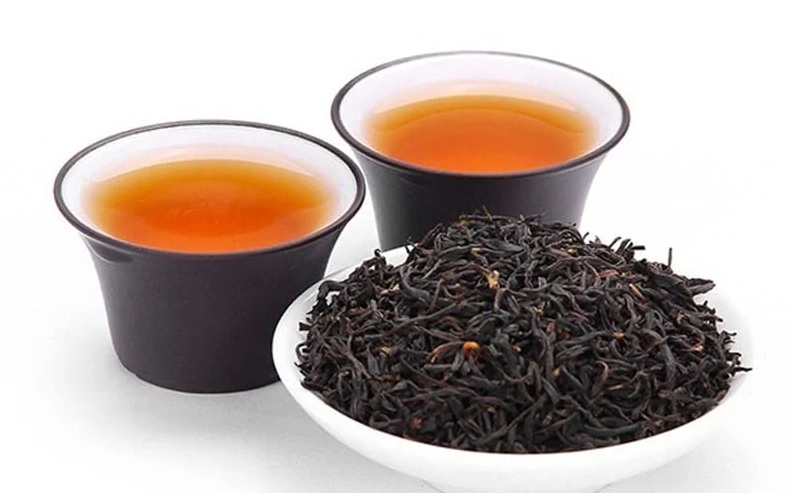
More and more customers around the world have imported Vietnamese black tea over the years.
You’ll get a perfect recipe if you choose Vietnamese black tea to blend with other teas from Sri Lanka, India and Indonesia. The blends will be perfect because the types will have the stronger taste of these teas and the darker red colour of Vietnamese tea. Almost all the world’s leading brands, such as Akbar, Twinings, Lupicia, Orimi, etc. choose Vietnamese black tea in their successful and innovative blends.
3. Oolong tea (Trà Ô Long)
The Vietnamese name for oolong tea is almost the same as the English name: Ô Long. According to ancient Chinese historical documents, oolong tea is considered to be a variety of tea originating from three provinces in south-east China: Fujian, Guangdong and the island of Taiwan.
There are four typical oolong teas, divided by growing area and processing method:
Northern Fujian oolong: The leaf is slightly twisted into a ribbon shape, dark brown or black in colour. It has a fairly strong flavour with a red colour and a floral fragrance.
Southern Fujian Oolong (also known as TieGuanYin): The characteristics of this tea are a dark infusion and a deep taste due to the heavy roasting technique.
Guangdong Oolong: This tea has a wild aroma, an astringent taste at the tip of the tongue and then a sweet aftertaste. If you drink too much oolong tea, you risk poisoning yourself and hallucinating.
Taiwanese oolong: Taiwanese oolong tea is shaped like rolled balls and has more nuances of flavour. Its aroma is much more versatile and deep. The colour of the tea lasts longer.
Vietnamese Oolong tea is almost similar to Taiwanese Oolong because of the growing technique. The varieties of tea and the brewing process are strongly influenced by Taiwanese tea.
The Vietnamese grew oolong tea on the Lamdong plateau, at an altitude of 800-1500 metres. This makes the taste of Vietnamese oolong tea just as competitive. What’s more, the Lam Dong plateau has clean, high-quality soil and a good terroir for growing tea.
According to the Vietnamese customs report on exports, 80% of the volume of Vietnamese oolong tea exports is destined for Taiwan.
4. Lotus tea (Trà sen)
Lotus tea is regarded as a representative of Vietnamese tea culture, contributing to the global tea culture with its many philosophies of life, sophistication and Zen Buddhist values.
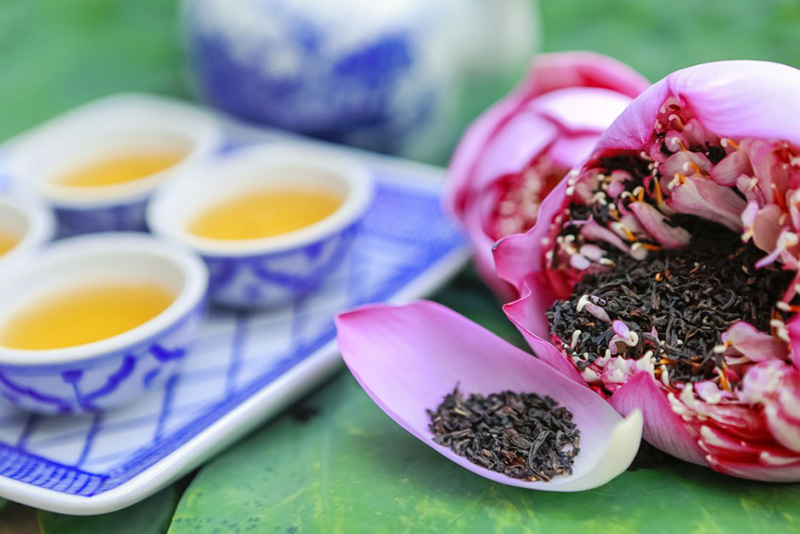
Making Vietnamese tea is complicated because the green tea buds are carefully selected. They are incubated for around a hundred days in an earthen pot or on a banana leaf; the incubation process reduces the bitterness, diminishes the smell of the tea and allows the tea petals to swell to absorb as much of the lotus flavour as possible, as the lotus flavour is very light. One pound of lotus-flavoured tea requires 1,000 to 1,400 lotus flowers.
5. Jasmine tea (Trà nhài)
Vietnamese jasmine tea is known as a blend of green tea and jasmine flowers. The tea has many health benefits, such as reducing stress, fighting cancer, weight loss, lowering cholesterol, etc.
The combination of Vietnamese green tea and Vietnamese jasmine flowers can help drinkers experience the freshness of the tea leaves with the fragrance of the flowers.
6. Artichoke tea (Trà Atiso)
Artichokes were introduced to Vietnam by the French hundreds of years ago. The plant often grew in temperate climates such as Da Lat, Quan Ba, Sapa, Lao Cai and Tam Dao. To date, artichokes have been planted in many places, including lowland areas such as Hai Duong. However, the priority planting area is in Da Lat.
Artichokes have been scientifically proven to benefit blood sugar health, improve digestion, heart health and liver health. That’s why we’d like to offer you this healthy product, planted in Vietnam, to serve you.
However, the taste of artichokes is too strong for most people. That’s why our R&D team has researched and developed a recipe for green tea blended with artichoke flowers and a few other beneficial herbs.
7. Bitter melon tea (Trà khổ qua)
Bitter melon tea is also known as ‘Trà mướp đăng’ in Vietnamese. Bitter melon is used to make tea because of its better medicinal properties. The Vietnamese believe that hybrid varieties created by humans cannot bring out the best of what the Creator has to offer. As a result, we tend to bring our customers the most naturally grown products on our land.
As its name suggests, bitter melon tastes bitter. Our R&D team has researched and delicately created a recipe for Vietnamese green tea blended with bitter melon.
8. Chamomile tea (Trà hoa cúc)
Recently, a number of well-known brands have introduced ranges of chamomile tea to the market, including Twinings, Ahmad, Lipton, Messmer, Celestial and others. Many consumers around the world welcome this tea. Chamomile tea is a popular tea from East to West. Its best-known benefits include stress reduction, cancer prevention, reducing inflammation, reducing menstrual pain, etc.
Vietnamese chamomile flower is a Taiwanese variety with a bright yellow colour and a pleasantly pungent scent. The flowers are dried in direct sunlight to absorb the sun’s energy and allow their medicinal properties to develop to the full.
Our camomile is grown in our garden using the most natural methods & without pesticides or chemical fertilisers.
Here are the most common types of Vietnamese tea We hope to give you a different perspective on the uniqueness of Vietnamese teas and to give you a better understanding of the Vietnamese tea culture.
III. Interesting facts about Vietnamese tea
– The Vietnamese often put all the tea cups together and pour the tea in a circle so that the tea is evenly distributed in all the cups. A standard Vietnamese tea set includes a teapot, 4 or 6 small cups and saucers, and a large cup or pot for straining or pouring the tea. The best tea sets come from the Bat Trang pottery village on the outskirts of Hanoi.
>>> Bat Trang Ceramic Village Tour
– A good type of Vietnamese tea allows you to prepare 3 to 4 servings by pouring hot water over it. A shallow saucer should be placed under the teapot when you serve the tea to catch the overflow and continue to warm the bottom of the teapot. With a cup of hot tea, you can sip it slowly to enjoy the flavour and breathe in to enjoy the smell. This is the Vietnamese way of drinking tea.
– Shan snow tea (Chè Shan Tuyết) also known as wild tea, is grown in the mountainous provinces of northern Vietnam, at altitudes of between 800 and 2,000 m, and can be steeped more than 10 times. It is also one of Vietnam’s best-known organic green teas. Most of the tea trees are over 300 years old.
– Vietnamese green tea can also be brewed with cold water using certain techniques. Pour boiled cold water into a pot of tea and keep it in the fridge for around 5 hours before drinking.
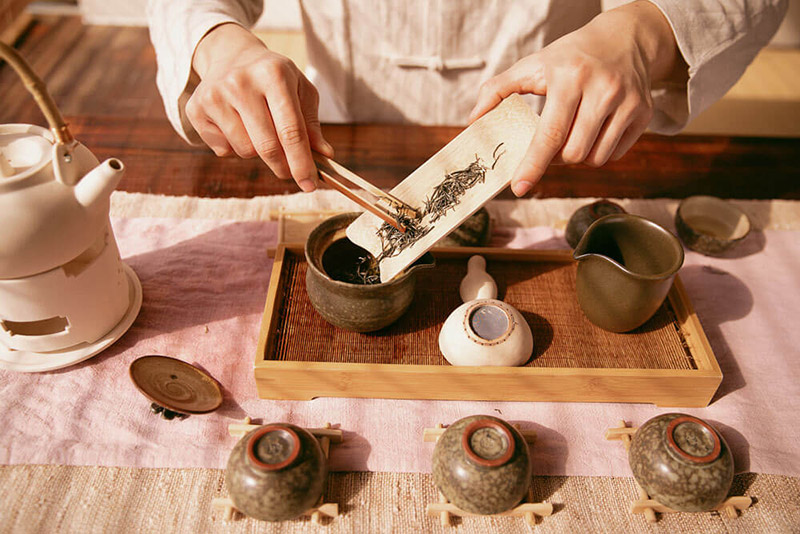
– People in the Vietnamese countryside still grow their own tea bushes in gardens. These fresh green leaves are processed differently from the loose green tea mentioned above. People simply boil water and put in the fresh green tea leaves. However, people must gently crush the leaves before boiling them.
– Restaurants and cafes often serve iced green tea for free, but if you have to pay, it’s rarely more than VND5,000. Except for the extra menu that you order separately such as lotus or herbal tea which are much more expensive.
IV. Trip to discover Vietnam tea
Vietnam’s location and geography mean that tea can be grown in both the subtropical north and the tropical south. Tea is grown in more than half of Vietnam’s 63 provinces and towns. But it is in Thai Nguyen (Tan Cuong), Phu Tho (Long Coc), Son La (Moc Chau), Cao Bang, Tuyen Quang, Ha Giang, Yen Bai (all in the north) and Lam Dong (in the central highlands) that it is most productive.
If you would like to learn where tea is mainly grown and what types of tea are produced, observe and prepare tea in a Vietnamese cultural style or participate in one of Vietnam’s tea festivals, ask our travel consultants to include this exciting experience in your tour package.
